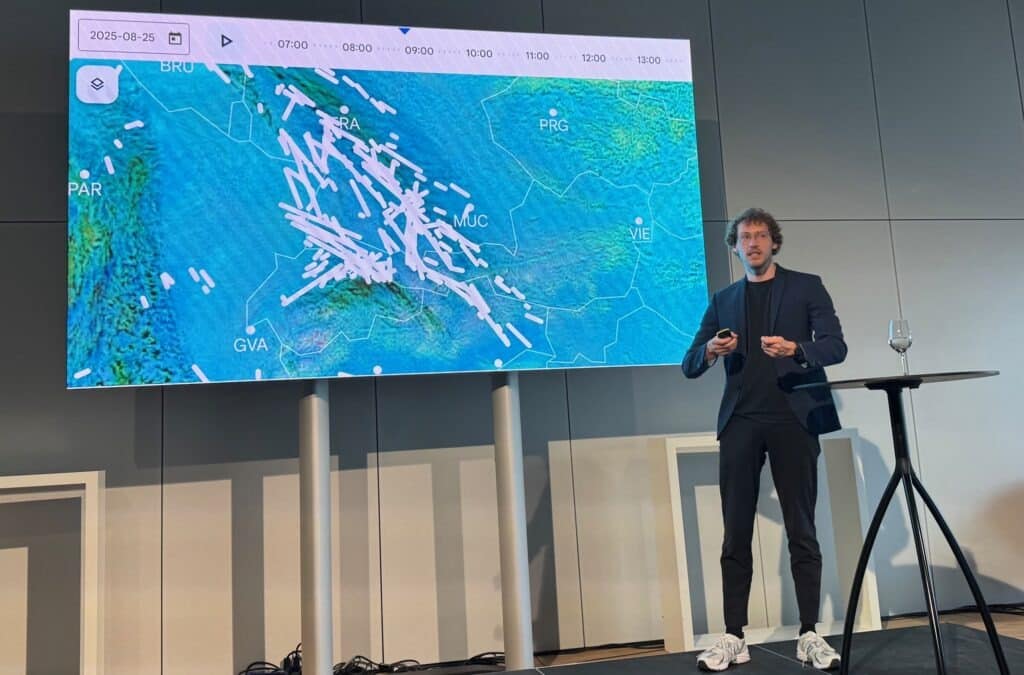The Invisible Cloud: why Contrails are more Harmful to the Climate than we Think
8 September, 2025 | Current General
On September 2, 2025, over 500 decision-makers from business, politics and science gathered in the new BERNEXPO festival hall to discuss paths to a more sustainable future. Thebrokernews was also present. Read the various contributions on this portal. We start with contrails in the sky.
Aircraft are not only considered climate polluters because of CO₂. Contrails contribute significantly to global warming, but their influence remains surprisingly underexposed in the public debate, as researchers have discovered. Max Vogler, Senior Engineer at Google in Zurich, is currently focusing on Project Contrails, an initiative to reduce the climate impact of air traffic.

White lines with dark effect
If you look up at the sky, you see them almost every day: long white lines that form behind airplanes and spread out into veil clouds. What seems familiar to us is explosive from a climate perspective.
Contrails are formed when hot exhaust gases meet cold, moist air at high altitude. This causes water vapor to condense and form ice particles. Sounds harmless, but the particles reflect solar radiation, store heat and change cloud formation.
Studies show: Contrails cause more short-term warming than the CO₂ emitted. However, the effect is more difficult to measure and is therefore often suppressed politically and in the media.
“Contrails are a sleeping giant”
Researchers warn that we are underestimating one dimension here. “Contrails are a sleeping giant of climate change,” says Dr. Ulrike Burkhardt, atmospheric researcher at the German Aerospace Center (DLR). Depending on the weather conditions, their influence can even be greater than the total CO₂ emissions of the flight.
Flights at night are particularly critical. During the day, contrails also reflect sunlight, which has a slightly cooling effect. At night, however, only the warming effect remains. This is precisely why transatlantic flights in the dark are particularly sensitive in terms of climate.
Solutions: Fewer lines in the sky?
The aviation industry is experimenting with countermeasures. One approach: adjusting flight routes so that aircraft avoid areas with high humidity. Even small deviations could prevent the formation of contrails.
Another approach lies in the fuel. The use of sustainable aviation fuels produces fewer soot particles and therefore fewer condensation nuclei for ice particles. Initial tests are promising, but large-scale implementation remains expensive and politically controversial.
The forgotten dimension of flying
Flying without CO₂ remains a utopia. But flying with less impact on the climate is possible with smarter routes, new fuels and an open debate. As long as the public perceives contrails as merely decorative patterns in the sky, their actual effect will remain invisible.
The white lines are more than aesthetics, they are a climate factor. And perhaps one that can be reduced more quickly than we think.
Binci Heeb
Read also: The Swiss Sustainability Challenge promotes young minds with sustainable visions




